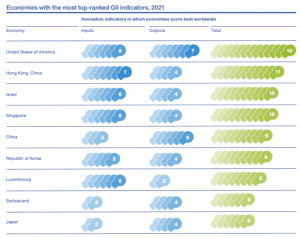
The Union cabinet has decided to set up National Research Foundation as the apex body to promote, fund and mentor scientific research at higher education institutions, fulfilling a promise it made four years ago. Modelled on the National Science Foundation of the United States, the NRF looks to foster the culture of research in India’s universities and colleges. The government has earmarked an initial budget of Rs 50,000 crore for NRF for the next five years.
The government says that NRF will result in democratisation of science funding, especially in the funding of projects in peripheral, rural and semi-urban areas. However, the massive overhauls of science textbooks under NCERT raises questions about the sincerity of the government in promoting science. The apex council on primary education had removed the chapters on periodic table and theory of evolution in the name of textbook rationalisation.
READ | India’s startups ecosystem slows amid funding and policy challenges
It remains to be seen if the Modi government will walk the talk on promoting scientific research in the country. If the government is indeed sincere with the NRF project, it must not meddle with institutions of education and research.
Functional independence will be a precondition for the success of NRF. But it does not appear possible given the constraints. For one, the top positions in the NRF board are reserved for members of the government, including the PM and the ministers of science, technology and education. The government tends to take prominent positions in important institutions, but it must ensure institutional autonomy to ensure that the NRF serves its purpose.
Economies with the most top-ranked GII indicators, 2021

Why National Research Foundation
The nodal agency on research will absorb the Science and Engineering Research Board (SERB). This was set up in 2008 and is responsible for funding science and technology start-ups, setting up incubators and funding science-related projects in central and state universities. Among other expectations, NRF is likely to facilitate research in universities which has sadly not been a priority in the institutes.
In fact, it has been time and again reiterated that research and higher education in the country must go hand in hand. So, one of the primary objectives of the NRF would be to build research capacities in universities.
However, the government is not solely focused on promoting research in the natural sciences and engineering, but NRF will also cater to promoting research in social sciences, arts and humanities. The agenda is to find solutions to the big problems facing Indian society.
To fund NRF, the government is eyeing aid from the private sector and of the Rs 50,000 crore estimated funding over the next five years, 50% of it is expected to be raised from the industry. This is easier said than done considering how the economy is faring in the aftermath of the coronavirus pandemic while macroeconomic conditions are also not favourable.
The NRF’s success in democratising the knowledge production ecosystem depends a lot on the incentives it offers to its private partners. However, the government remains optimistic and said that if the idea for a project is good, then the industry has no qualms in supporting it and funding it. A Corporate Social Responsibility component in the Bill is also being considered.
Need for institutions like NRF
Setting up of institutions like NRF is a positive and laudable move considering India does not even spend 0.7% of its GDP on research and development. This number is abysmally low compared with other large economies. In fact, the gross expenditure on R&D declined from 0.84% in 2008 to about 0.69% in 2018, the last year for which confirmed figures are available. To put things in perspective, the United States spent 2.83%, China spent 2.14%, and Israel spent 4.9% of GDP on R&D. Even countries like Brazil, Malaysia and Egypt spend more of their GDP on research.
The setting up of NRF is the easier part. But its success will depend on the willingness of the government to ensure its autonomy and a steady flow of funds. The absence of an institution like NRF has done a lot of harm to scientific research in a country where scientists work in silos and the research output of only a few select institutes matches up to the global standards. It is not a secret that scientists in even the top institutes face bureaucratic hurdles in raising money. In an ideal world, the NRF could be a game-changer, but in a regular world, it may not make any difference.
